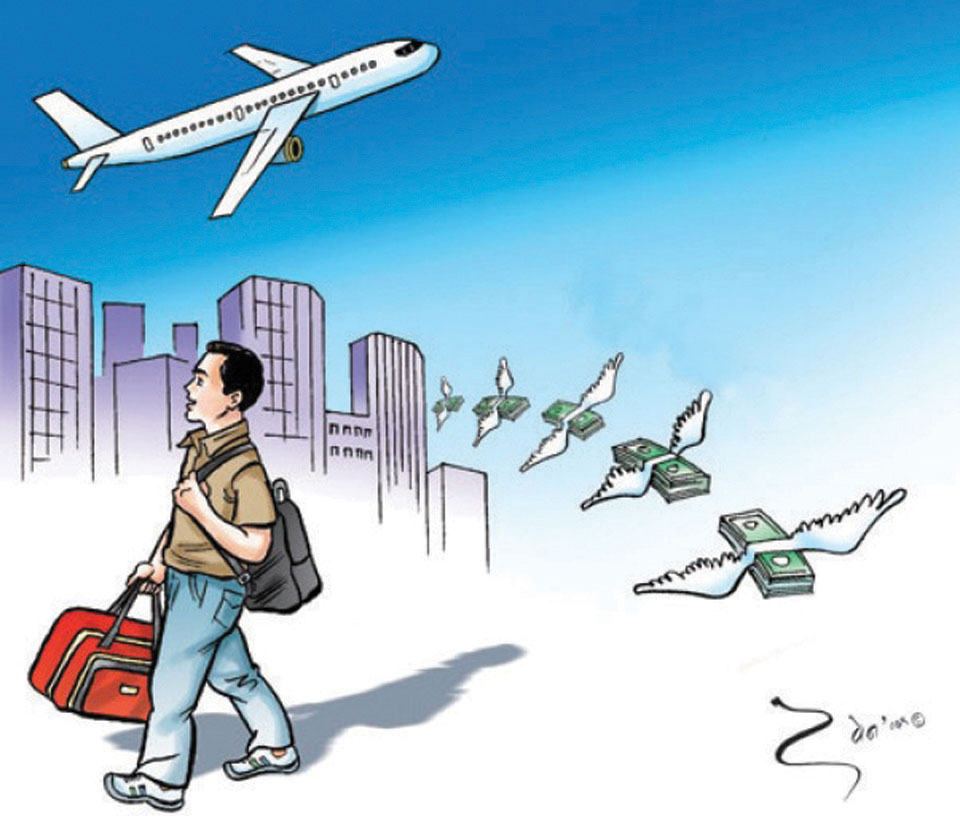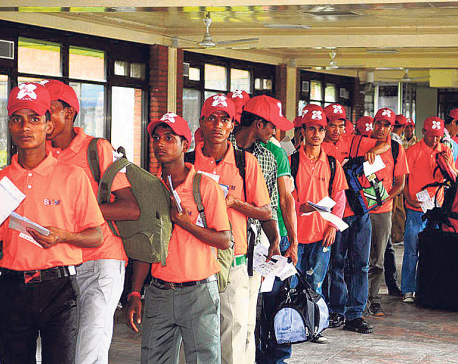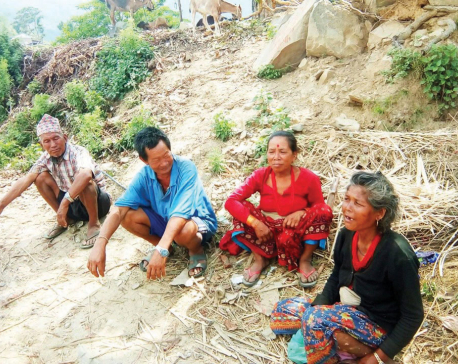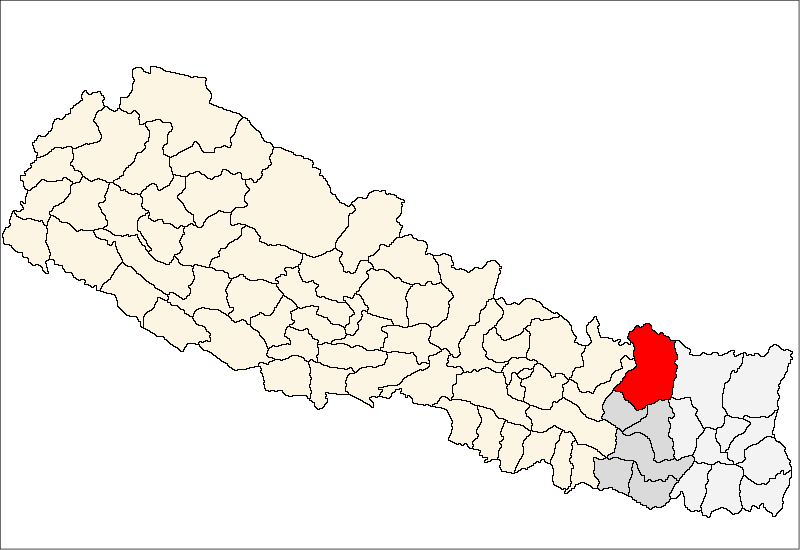
OR
About 16.5 percent of returnee migrant workers remain unemployed
Published On: December 22, 2023 06:15 PM NPT By: Republica | @RepublicaNepal

KATHMANDU, Dec 22: After returning from foreign employment, the economic status of the returnee migrant workers, which should be relatively improved, seems to be still at risk. A study found that they are at a greater financial risk after returning to their home country.
According to a study by the Pravasi Nepali Coordination Committee (PNCC), their reintegration situation after returning to Nepal is not effective.
About 37.6 percent of migrant workers who returned to Nepal from foreign employment are engaged in subsistence agriculture, while 16.5 percent are unemployed. This reflects the inability of workers to find high-paying jobs upon return, the mismatch of their skills and knowledge in the labor market, and the potential lack of decent work opportunities.
Likewise, 9.2 percent of migrant workers who returned from foreign employment have used the acquired skills in the country. About 33 percent said that the skills learned abroad were not relevant to Nepal's labor market, 20 percent said that similar jobs were not available in the Nepali labor market or the local labor market, and 11 percent could not use the skills they learned in Nepal due to technical differences.
PNCC has studied the situation of economic and psycho-social reintegration of migrant workers who have returned from foreign employment and their plans to return to foreign employment using surveys and other sources.
The study of PNCC is based on interviews with 109 Nepali migrant workers out of 22,148 persons registered from 2014 to 2022. Since its establishment in 2009, PNCC has been supporting the rescue and repatriation of migrant workers in crisis and access to justice.
PNCC has been keeping records of administrative data (quantitative and qualitative) while providing various services. The study was conducted by the Center for the Study of Labor and Mobility, and Social Science Baha.
Migrant workers who have returned from overseas employment are at a greater financial risk. A study of migrants shows that nearly 80 percent of migrant workers rely on loans to finance their migration. About 50 percent of those who took loans seem to be in arrears. Similarly, it was found that 88 percent of the migrant workers who returned the loan did so with the money they earned from abroad.
It seems that 72 percent of workers who returned from foreign employment were not able to save during their foreign employment. It seems that they have not been able to save money due to the various problems faced in the destination countries during their foreign employment, due to issues related to contract letters, imprisonment and disappearance related issues. As a result, Nepali migrant workers are less likely to fully reap the benefits of labor migration and are less likely to invest in ventures.
Although the Government of Nepal has introduced a policy of investing the capital earned by Nepali migrant workers who have returned from foreign employment into enterprises in Nepal, highlighting their lack of financial access, the main challenge to turn the returnee migrants into entrepreneurs has been highlighted.
The study of PNCCI shows that Nepali migrant workers who have returned from foreign employment have no information about the employment, enterprise and financial plans and programs conducted by the central, provincial and local levels.
About 59 percent of migrant workers said that they were not aware of government-run financial schemes. Around 25.7 percent were aware of the government led Prime Minister Employment Program (PMEP) for unemployed citizens, 22 percent were aware of skill and vocational training and 17.4 percent were aware of the subsidized loan scheme. However, it was found that only 13.3 percent who heard about the various schemes received benefits from the scheme.
Challenges have been seen in the repatriation of migrant workers who have returned from foreign employment. Based on the results of the study, 44 percent of the migrant workers who returned from foreign employment said that they are planning to go to foreign employment again. It seems that various interrelated factors have forced the migrant workers who have returned to Nepal to go for foreign employment again.
It seems that 54 percent of migrant workers plan to go abroad again due to failure to integrate into the local labor market, 80 percent of insufficient household income to cover household expenses, and 20 percent of professional failures.
Similarly, 54 percent of the migrant workers who are planning to go to foreign employment again, it seems that they are planning to go to foreign employment again by taking a loan. In addition, 46 percent of the migrant workers who are planning to go to foreign employment again, it seems that they still have to pay the loan they took before going to foreign employment. This study highlights the important role of debt in migration and the increased risk of migrant workers becoming trapped in debt cycles.
Especially, after the covid-19 epidemic, millions of young people lost their jobs abroad and returned to Nepal, their economic and psycho-social reintegration became an important issue. The government of Nepal conducted various economic and psycho-social reintegration programs for Nepali migrant workers who returned from foreign employment to use the skills, capital and experience gained during foreign employment in Nepal. However, the study shows that there are still many challenges and obstacles in the sustainable reintegration of those workers.
You May Like This

Minister Kunwar pledges to make foreign employment dignified
KATHMANDU, August 1: Minister for Labor, Employment and Social Security, Sher Bahadur Kunwar has said he will work to make... Read More...

Delay in verification of demand letters creates problem for foreign job seekers
KATHMANDU, Feb 8: Although the risk of the COVID-19 pandemic is being minimized in different destination countries, the Nepali embassies... Read More...

Elderly people left alone in villages to fend for themselves
SINDHULI, June 29: When Nara Bahadur Pulami, 72, of Otrekot village in Sindhuli was young, he had two daughters and... Read More...




Just In
- NEA Provincial Office initiates contract termination process with six companies
- Nepal's ready-made garment exports soar to over 9 billion rupees
- Vote count update: UML candidate continues to maintain lead in Bajhang
- Govt to provide up to Rs 500,000 for building houses affected by natural calamities
- China announces implementation of free visa for Nepali citizens
- NEPSE gains 14.33 points, while daily turnover inclines to Rs 2.68 billion
- Tourists suffer after flight disruption due to adverse weather in Solukhumbu district
- Vote count update: NC maintains lead in Ilam-2













Leave A Comment